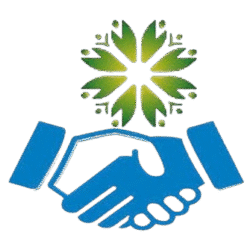Affiliate marketing, at its core, is about connecting consumers with valuable products or services through your endorsement, and earning a commission for each successful conversion. However, simply throwing affiliate links around and hoping for the best rarely yields significant results. The key to unlocking the true potential of affiliate marketing lies in crafting a well-defined and optimized affiliate marketing funnel. This funnel guides potential customers through a series of carefully planned steps, nurturing their interest, building trust, and ultimately leading them to click your affiliate link and make a purchase.
Think of the funnel as a journey. Your goal is to gently shepherd your audience from a state of unawareness to becoming happy and loyal customers of the product or service you’re promoting. This journey involves strategically placed content, compelling calls to action, and a deep understanding of your target audience’s needs and pain points.
This comprehensive guide will explore the essential components of an effective affiliate marketing funnel, detailing each stage and providing actionable strategies for maximizing conversions and boosting your affiliate revenue.
The Stages of an Affiliate Marketing Funnel
While variations exist, a typical affiliate marketing funnel can be broken down into four key stages:
-
Awareness (Top of the Funnel – TOFU): This is the broadest stage, where your primary goal is to attract potential customers to your content and introduce them to the problems that the product or service you’re promoting can solve.
-
Interest (Middle of the Funnel – MOFU): Once you’ve captured attention, the interest stage focuses on nurturing that interest by providing valuable information about the problem and introducing the potential solution (the product/service you’re promoting).
-
Decision (Bottom of the Funnel – BOFU): At this stage, the prospect is actively considering making a purchase. Your role is to provide compelling reasons why your recommended product/service is the best option and overcome any remaining objections.
-
Action (Bottom of the Funnel – BOFU): This is the final stage where the prospect clicks your affiliate link, makes a purchase, and you earn a commission. You also want to encourage them to become repeat customers and advocates for the product.
Let’s delve deeper into each of these stages:
1. Awareness (TOFU): Attracting Your Target Audience
The top of the funnel is all about casting a wide net and attracting the right audience. You want to create content that is engaging, informative, and easily discoverable. This content should focus on the problems your target audience faces, not directly on the product itself.
- Content Formats:
- Blog Posts: Create valuable blog posts that address your audience’s pain points. For example, if you’re promoting a weight loss program, write articles about healthy eating habits, workout routines, or common weight loss challenges.
- Social Media: Utilize social media platforms to share engaging content, build a community, and drive traffic to your website or landing pages. Run contests, ask questions, and share valuable tips related to your niche.
- Infographics: Visually appealing infographics can be highly shareable and effective at conveying complex information in an easy-to-understand format.
- Videos: Videos are incredibly engaging and can be used to demonstrate product features, provide tutorials, or share personal experiences.
- Podcasts: Host a podcast where you interview experts in your niche, discuss industry trends, and share valuable insights.
- SEO Optimization: Implement strong SEO strategies to ensure your content ranks high in search engine results. This includes keyword research, on-page optimization (title tags, meta descriptions, header tags), and off-page optimization (link building).
- Key Strategies for TOFU:
- Focus on Value: Provide genuine value to your audience without immediately pushing a sale. Build trust and establish yourself as an authority in your niche.
- Keyword Research: Identify the keywords your target audience is using to search for information related to their problems. Use these keywords in your content to improve its search engine visibility.
- Engaging Headlines: Create compelling headlines that grab attention and entice people to click on your content.
- Call to Action (CTA): While you’re not directly selling anything at this stage, include subtle calls to action to encourage visitors to explore your website further, such as “Read more,” “Download our free guide,” or “Join our newsletter.”
- Content Calendar: Plan and schedule your content creation and distribution to maintain a consistent presence and avoid overwhelming yourself.
2. Interest (MOFU): Nurturing and Educating Your Audience
Once you’ve attracted visitors to your website, the interest stage focuses on nurturing their interest and educating them about the potential solutions to their problems. This is where you subtly introduce the product or service you’re promoting as a viable option.
- Content Formats:
- Ebooks & Guides: Offer free ebooks or guides that provide in-depth information about specific topics related to your niche and the product you’re promoting.
- Email Marketing: Build an email list and send regular emails with valuable content, helpful tips, and exclusive offers.
- Webinars: Host webinars where you present valuable information, answer questions, and demonstrate the product or service you’re promoting.
- Case Studies: Showcase real-life examples of how the product or service has helped others solve their problems.
- Product Comparisons: Create blog posts or videos comparing different products or services in your niche, highlighting the strengths and weaknesses of each.
- Tutorials & How-To Guides: Provide detailed tutorials and how-to guides that demonstrate how to use the product or service to achieve specific results.
- Key Strategies for MOFU:
- Segmentation: Segment your email list based on your audience’s interests and needs. This allows you to send more targeted and relevant content.
- Personalization: Personalize your emails and content to make your audience feel valued and understood.
- Lead Magnets: Offer valuable free resources in exchange for email addresses. This will help you build your email list and nurture leads.
- Storytelling: Use storytelling to connect with your audience on an emotional level and make your content more engaging.
- Focus on Benefits: Highlight the benefits of the product or service, rather than just its features. Explain how it can solve your audience’s problems and improve their lives.
- Building Trust: Be transparent and honest about the product or service you’re promoting. Don’t make exaggerated claims or try to hide any potential drawbacks.
3. Decision (BOFU): Convincing and Overcoming Objections
The decision stage is where you need to convince potential customers that the product or service you’re promoting is the best solution to their problems. This is where you provide compelling reasons to buy and address any remaining concerns or objections.
- Content Formats:
- Product Reviews: Write detailed and unbiased product reviews that highlight the pros and cons of the product or service.
- Testimonials: Share testimonials from satisfied customers to build trust and credibility.
- Case Studies (Detailed): Show more in-depth examples of how the product or service has helped others solve their problems and achieve their goals.
- Comparison Reviews: Compare the product you are promoting with direct competitors, highlighting the advantages.
- FAQ Pages: Create a comprehensive FAQ page that addresses common questions and concerns about the product or service.
- Demo Videos: Show the product in action and demonstrate how it can be used to solve specific problems.
- Key Strategies for BOFU:
- Address Objections: Anticipate and address common objections that potential customers might have. This could include concerns about price, features, or potential risks.
- Highlight Guarantees: Emphasize any guarantees or warranties that are offered with the product or service.
- Offer Incentives: Provide incentives to encourage potential customers to make a purchase, such as discounts, free shipping, or bonus products.
- Create Urgency: Create a sense of urgency by highlighting limited-time offers or scarcity of the product or service.
- Social Proof: Utilize social proof elements, such as customer reviews, ratings, and testimonials, to build trust and credibility.
- Clear Call to Action: Use clear and compelling calls to action to encourage potential customers to click your affiliate link and make a purchase.
4. Action (BOFU): Driving Conversions and Building Loyalty
The action stage is the final stage where the prospect clicks your affiliate link and hopefully makes a purchase. However, your work isn’t done yet. You want to encourage them to become repeat customers and advocates for the product.
- Key Strategies for Action:
- Optimize Landing Pages: Ensure your landing pages are optimized for conversions. This includes having a clear and concise message, a compelling call to action, and a user-friendly design.
- Simplify the Purchase Process: Make it as easy as possible for potential customers to complete the purchase process. Minimize the number of steps required and provide clear instructions.
- Provide Excellent Customer Service: Be responsive to customer inquiries and provide excellent customer service to build trust and loyalty.
- Follow-Up Emails: Send follow-up emails to new customers to thank them for their purchase and provide additional support.
- Encourage Reviews: Encourage satisfied customers to leave reviews and testimonials.
- Offer Exclusive Deals: Offer exclusive deals and discounts to repeat customers to encourage them to make future purchases.
- Build a Community: Create a community around the product or service to foster engagement and loyalty.
Important Considerations for Building an Effective Affiliate Marketing Funnel:
- Know Your Audience: Understand their demographics, interests, pain points, and buying habits. This will help you create content that resonates with them and tailor your marketing efforts accordingly.
- Choose the Right Products: Promote products or services that are relevant to your audience and that you genuinely believe in. Authenticity is key to building trust and credibility.
- Track Your Results: Use analytics tools to track the performance of your funnel and identify areas for improvement. Monitor your traffic, conversion rates, and affiliate commissions.
- Test and Optimize: Continuously test and optimize your funnel to improve its performance. Experiment with different content formats, calls to action, and marketing strategies.
- Be Patient: Building an effective affiliate marketing funnel takes time and effort. Don’t get discouraged if you don’t see results immediately. Stay persistent, keep learning, and keep optimizing.
- Comply with Regulations: Ensure you are compliant with all relevant regulations, including disclosing your affiliate relationships and adhering to advertising guidelines.
In conclusion, building an effective affiliate marketing funnel requires a strategic and systematic approach. By understanding the different stages of the funnel, creating valuable content, and focusing on your target audience’s needs, you can increase your conversion rates and generate significant affiliate revenue. Remember to continuously test, optimize, and adapt your funnel to stay ahead of the competition and maximize your results.


